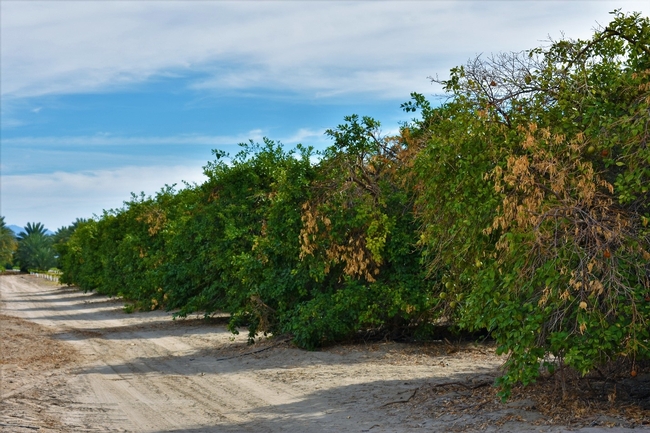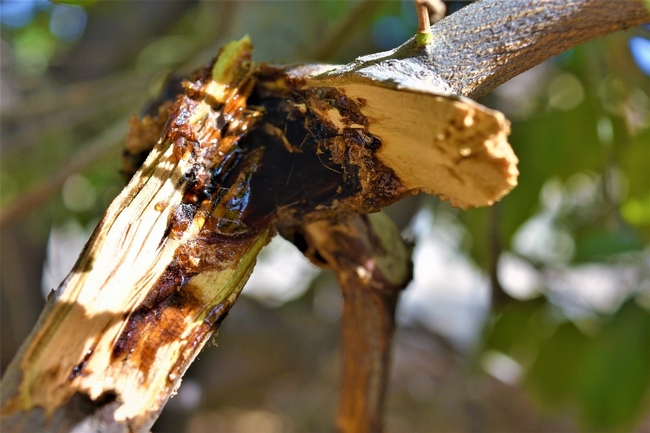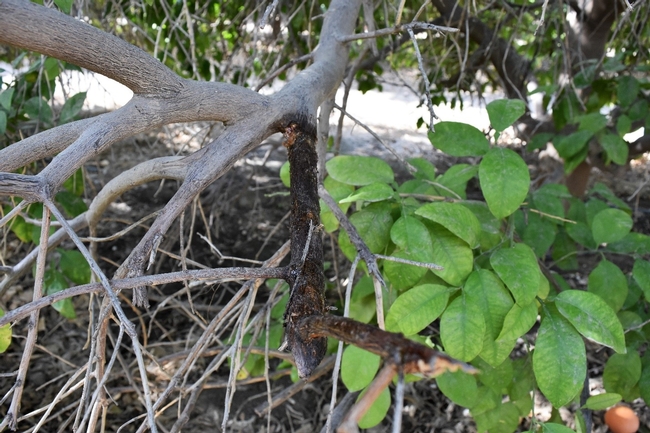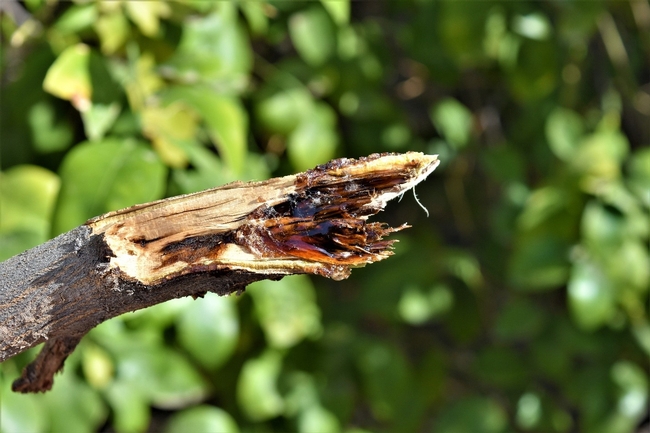
Posts Tagged: Lemons
World Citrus News
There's so much gloom about the fate of citrus in Florida and California, but in spite of that talk, world citrus production is increasing.
Global orange production for 2018/19 is forecast to expand 4.2 million tons from the previous year to 51.8 million as favorable weather leads to larger crops in Brazil and the United States. Consequently, fruit for both fresh and processing uses is expected to be greater. Fresh exports are forecast 4 percent higher to 5.1 million tons.
Brazil's production is forecast to rise 13 percent to 17.8 million tons as favorable weather is expected to result in good bloom and fruit set. Fresh orange consumption and exports are flat while oranges for processing are up 2.0 million tons to 12.8 million.
China's production is projected down slightly to 7.2 million on unfavorable weather, resulting in a smaller crop in Jiangxi province. Along with only a small increase in imports, consumption is
lower on overall reduced supplies. South Africa and Egypt are the top two suppliers, accounting for 60 percent of imports.
U.S. production is forecast to recover, jumping 41 percent to 5.0 million tons due to favorable weather. Orange production in Florida has been declining for years due to citrus greening, which has decimated groves and increased costs for crop maintenance.
However, last year, the industry also suffered from damages caused by Hurricane Irma. This year's higher forecast shows a recovery to recent-year levels. Exports, consumption, and fruit for processing are all higher with the larger crop.
Read more about the world citrus industry and get individual country reports generated by the USDA's Foreign Agricultural Service
https://agfstorage.blob.core.windows.net/misc/FP_com/2019/03/04/Florr.pdf
FAS Reports from Overseas Offices The Citrus: World Markets and Trade circular is based on reports from FAS Overseas Posts since December 2018 and on available secondary information. Individual country reports can be obtained on FAS Online at: http://gain.fas.usda.gov/Pages/Default.aspx .

citrus cornucopia
Support Biocontrol Program
Harry S. Smith, was born in 1883 to a poor farming family in Nebraska. He was trained in Biological Control in the northeast U.S.A. where he worked on the biological control of gypsy moth with the USDA. Upon his appointment to Sacramento in 1913 to work on biological control issues important to California, Smith brought recognized entomological training in biological control to California for the first time.
The phrase “Biological Control” was first used by Smith in August 1919 at the meeting of Pacific Slope Branch of the American Association of Economic Entomologists at the Mission Inn in downtown Riverside.
Based on his experiences on biological control of forest and pasture pests, Smith brought caution and tempered exaggeration about biological control in California as he worked with citrus growers and other commodity groups.
 In 1923, Smith and four colleagues moved from Sacramento to the University of California Riverside Campus which had evolved from the Citrus Experiment Station (est. 1915) and he formed the Division of Beneficial Insect Investigations which was a unit distinct from the Division of Entomology. Prof. Harry, as he was
In 1923, Smith and four colleagues moved from Sacramento to the University of California Riverside Campus which had evolved from the Citrus Experiment Station (est. 1915) and he formed the Division of Beneficial Insect Investigations which was a unit distinct from the Division of Entomology. Prof. Harry, as he was
affectionately known, is fondly remembered by his students as a patient and generous supervisor who encouraged research and work on applied and
practical aspects of biological control.
Smith went on to create the Department of Biological Control which offered the only graduate training in Biological Control in the world. The Department of Biological Control became the Division of Biological Control in 1969 which then merged into Department of Entomology at UC Riverside in 1988. Prof. Harry had two sons, both trained to be entomologists. Instead of pursuing biological control they went into the pesticide industry and Sam Smith died accidentally from pesticide poisoning. Prof. Harry passed away in 1957 and left UC Riverside $15,000 to develop a scholarship fund to support training and education in biological control. This fund has grown to approximately $45,000 today, but is insufficient to provide meaningful support to students wanting to be trained in biological control.
Our goal is to build the Harry S. Smith Scholarship fund to a significant level where the corpus of the fund will be able to generate enough revenue to provide substantial support to students wanting to be trained in biological control. This can only be achieved by actively soliciting donations from individuals, industries, and organizations that have benefited over the years from biological control projects that have that have been run by UC scientists, in particular entomologists at UC Riverside. If biological control is to continue to prosper in southern California we need to continue recruiting and training high quality students. To do this, we need to be able to provide substantial financial support, and the Harry S. Smith Scholarship is one way to attract excellent students to UC Riverside.
Learn more about the program and how you can push the fund over the top at:
http://biocontrol.ucr.edu/hoddle/harrysmithfund.html

parasitic wasp laying
Case Study: Branch Canker and Hendersonula Diseases Troubling Growers in the Desert
In the fall of 2016 growers in the Coachella desert have been experience very puzzling symptoms on their grapefruit trees. One incident, symptoms the tree had gumming oozing from the branches (Fig. 1). Usually if it were oozing from the stump it would be a root disease such as Phytophthora spp. After photos and branch samples were taken to the Plant Pathologist at University of California, Riverside, Dr. Akif Eskelan, results determined that the trees had branch canker and Hendersonula Disease.
Symptomology
Infection by Nattrassia mangiferae (Hendersonula toruloidea) causes bark cracking and peeling or dead bark that remains tightly attached to dead limbs. Black, sooty growth may develop beneath infected bark. Brownish moist areas appear on limbs during the first stages of disease, then the bark in these areas cracks or peels away revealing black masses of fungal spores (Fig 4.). In advance stages, the injured limbs may “bleed” profusely, oozing a sap like sticky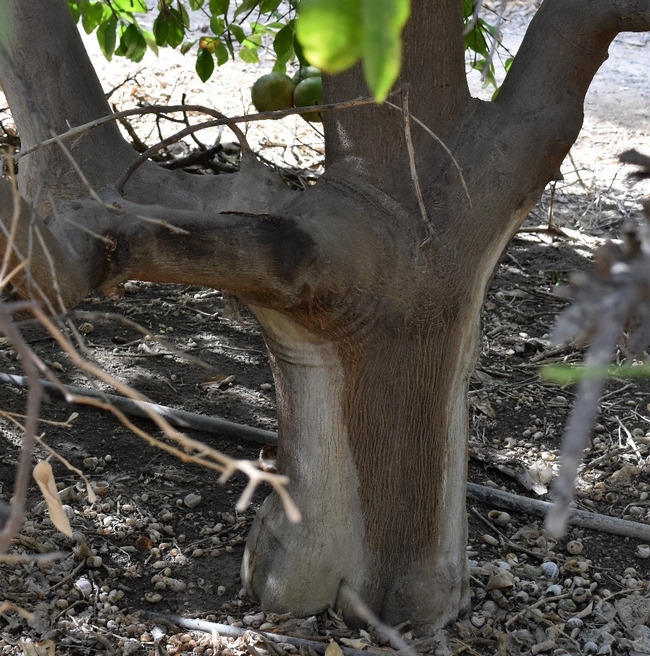
Management
Trees weakened by a disease, water stress, nutritional deficiencies, excessive pruning/mechanical damage create a are more susceptible. As many of these stressors can cause a tree to get sunburned and creates wounds that can serve as infection sites for this pathogen. Prevent sunburn by maintaining vigorous canopies through best management practices http://fruitandnuteducation.ucdavis.edu/generaltopics/ . Proper irrigation, fertilization, pruning, and pest control. Look for symptoms annually right after harvest while there are still healthy leaves on trees. Remove diseased limbs, cutting back to a lateral branch into healthy wood that shows no discoloration. Burn all infested wood, do not chip and use infected wood as mulch.
Additional Resources can be found at:
http://eskalenlab.ucr.edu/handouts/desertdieback.pdf
Citrus Grower Meeting Coming Soon
Every year growers get together to learn what is being done in the citrus research world that could affect their operations. This June, University of California and the Citrus Research Board are bringing some good talks to three different growing areas. All growers are invited, but RSVPs are appreciated.

CRB-GrowerSeminar-Flyer 2017
Citrus Tasting at Lindcove
Well it came again, the Citrus Tasting at Lindcove Research and Education Center in Lemon Grove near Exeter, close to Visalia and just down the road from Fresno and up from Tulare. They came, growers to see and taste new and old varieties. And then the next day, the general public with oooos and ahhhs to taste the range of flavors we call citrus. Big fruited pummelos and little fruited finger limes. Sweet, sour, not sweet, not sour, dull, and boing!. Growers came on Friday morning and the general public the following Saturday. It was crowded both days.
Citrus is wonderful, everyone knows, but it is also under dire threat of Huanglongbing and the potential destruction of this industry and the trees that are found in many backyards. So in a completely unscientific survey, I asked growers why they were there if their world was about to end. First of all, those who showed up were already optimistic about the future, so there was already a self-selection. But, growers felt like a solution would be found, science would find an answer. Driving across the Valley and through coastal counties like Ventura there are lots of new plantings......if there's water. But it's surprising how confident growers are about finding a solution. There are some hopeful signs out there like the new rootstock release from USDA of US-1516 which shows a lot of tolerance to the disease. Then there is the potential of disease tolerance in a citrus produced in Florida from a collaboration of Southern Gardens, USDA and a consortium of Universities. Yes, there is hope, but years are still needed to test and gear up for production for commercial applications.
So it was good to be around growers who have an enthusiasm for the future and looking for new planting varieites.
And they are both grapefruit, one is Melogold the one on right is Oro Blanco
Buddha's Hand citron
The Citrus Display at Lindcove Research and Extension Center, before the crowds
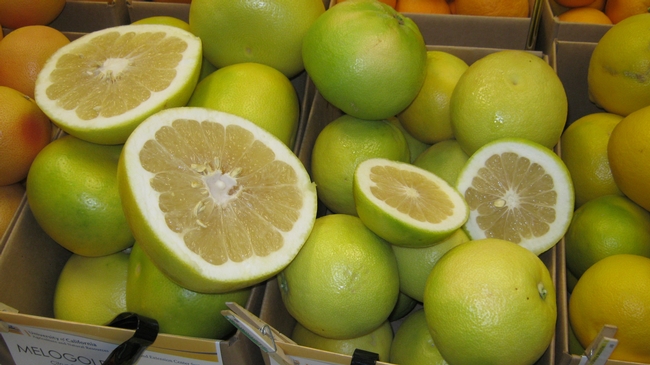
Melogold and Oro Blanco
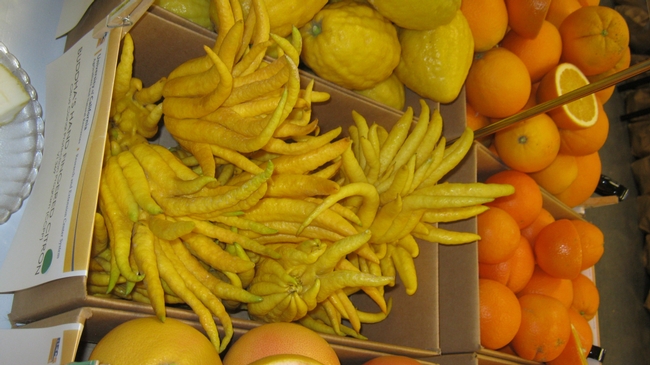
IMG 1965
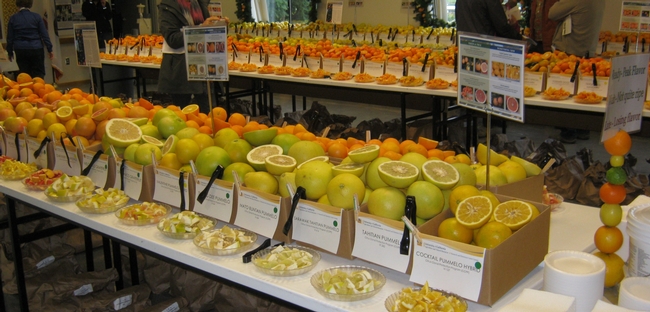
citrus display

